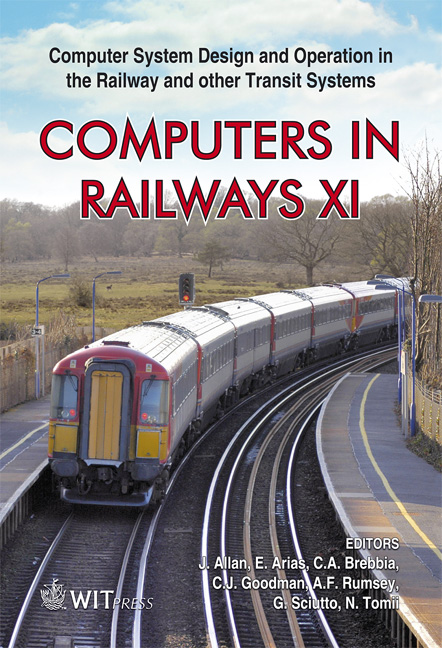ERTMS Level 2: Effect On Capacity Compared With \“best Practice” Conventional Signalling
Price
Free (open access)
Transaction
Volume
103
Pages
10
Page Range
213 - 222
Published
2008
Size
298 kb
Paper DOI
10.2495/CR080221
Copyright
WIT Press
Author(s)
W. A. M. Barter
Abstract
This paper reviews potential capacity benefits attributable to ERTMS Level 2 compared with UK Multiple Aspect Signalling (MAS), tests scope for their exploitation against the practicalities of preparing a comprehensive timetable for a suburban rail network, and proposes simulation experiments to confirm the benefits. The UK is preparing for adoption of ERTMS Level 2, System D, as its standard signalling system. At the same time growth in passenger demand deriving from privatisation and socio-economic factors is continuing at levels beyond those forecast by conventional planning models, and major expenditure to cater for demand is becoming necessary. It is widely hoped that ERTMS will offer capacity benefits to help cater for demand in the medium term. A variety of claims for the potential capacity increases deriving from ERTMS Level 2 have been made. Many are felt to be simplistic or optimistic. Effects of ERTMS Level 2 System D are seen to arise principally in the context of reduction of line headways. Compared with UK MAS, headways are expected to be reduced by cab signalling normalising block boundaries once lineside signals are eliminated, and from division of the train safety separation into shorter signalling blocks. However, line headways are only one factor in determining the capacity of a network, and other crucial factors are largely unaffected by the chosen signalling system. The practical potential of the likely benefits is then tested for plausibility against the example of the commuter operation serving London’s Charing Cross station. A 10% increase in capacity is found to be plausible, but only so long as outputs from unrelated projects can be assumed, and track circuit arrangements are redesigned for the purpose. Some methods of operation, and public expectations of the type of service, must also be modified. Keywords: signalling, operations, capacity, ERTMS.
Keywords
signalling, operations, capacity, ERTMS.





